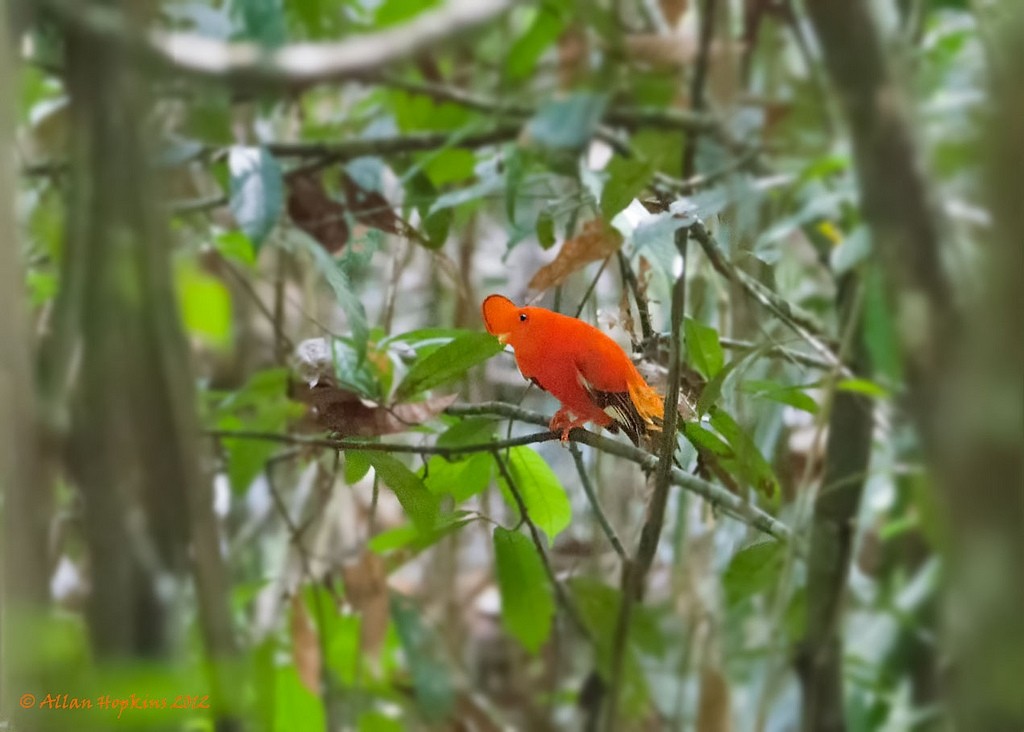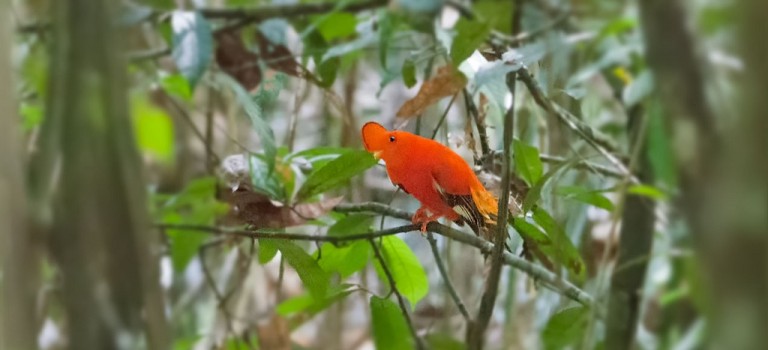How did you do with this week’s Mystery Creature? A pretty extravagant bird don’t you think? It was the Guianan cock of the rock (Rupicola rupicola), a native South American passerine.

Here are ten interesting facts about this beautiful bird:
- The colours are amazing, aren’t they? But as is common in the world of birds, these bright colours are just for the men (sexual dimorphism). The females are adorned with more muted colours and lack the large orange plumage of the lower back. However they do have the very distinctive, fan-like crest that makes these birds so easy to identify.
- Not surprisingly… the males are brightly coloured to attract a mate. They participate in a Lek, and gather with many other males in a display of feather pluming and vocal calling in order to be noticed by a female.
- Although they usually prefer the safety of the dense forest vegetation, for lekking, the males claim their space in an open area of the forest.
- When the females pick their suitor they do so by pecking him on the back. Very romantic!
- These are solitary birds, only coming together for breeding purposes. The female nests and rears the young hatchlings alone. They prefer high rocky terrain and caves for breeding, hence the name ‘cock of the rock’.
- The female will build a saucer like nest out of mud, twigs and other forest foliage on the sheer face of a cliff, cave or bolder. This extreme nesting area helps protect the nest from predation. She lays two eggs.
- Although these birds have a diet rich in fruit, they are also thought to occasionally supplement their diets with insects, small frogs and possibly small reptiles.
- They themselves are preyed on primarily by Harpy Eagles, Hawk Eagles and Forest Falcons. Snakes and owls are also a common threat.
- They make some very interesting sounds, from the crow, cat and chicken like mating calls of the males, to the unusual foraging sounds of both sexes that is apparently likened to ‘a rubber duck being strangled’.
- The wings of the male produce a whistling sound in flight.
***
And a little something else … The Boot’s Maternity and Infant Parenting Blog Awards 2015 are still open for voting. If you like what I do here and have a minute to spare I’d really appreciate your vote; You just need to click the image below and scroll down to the “Best Parenting Blog” section under “For the Family”; Many thanks!

